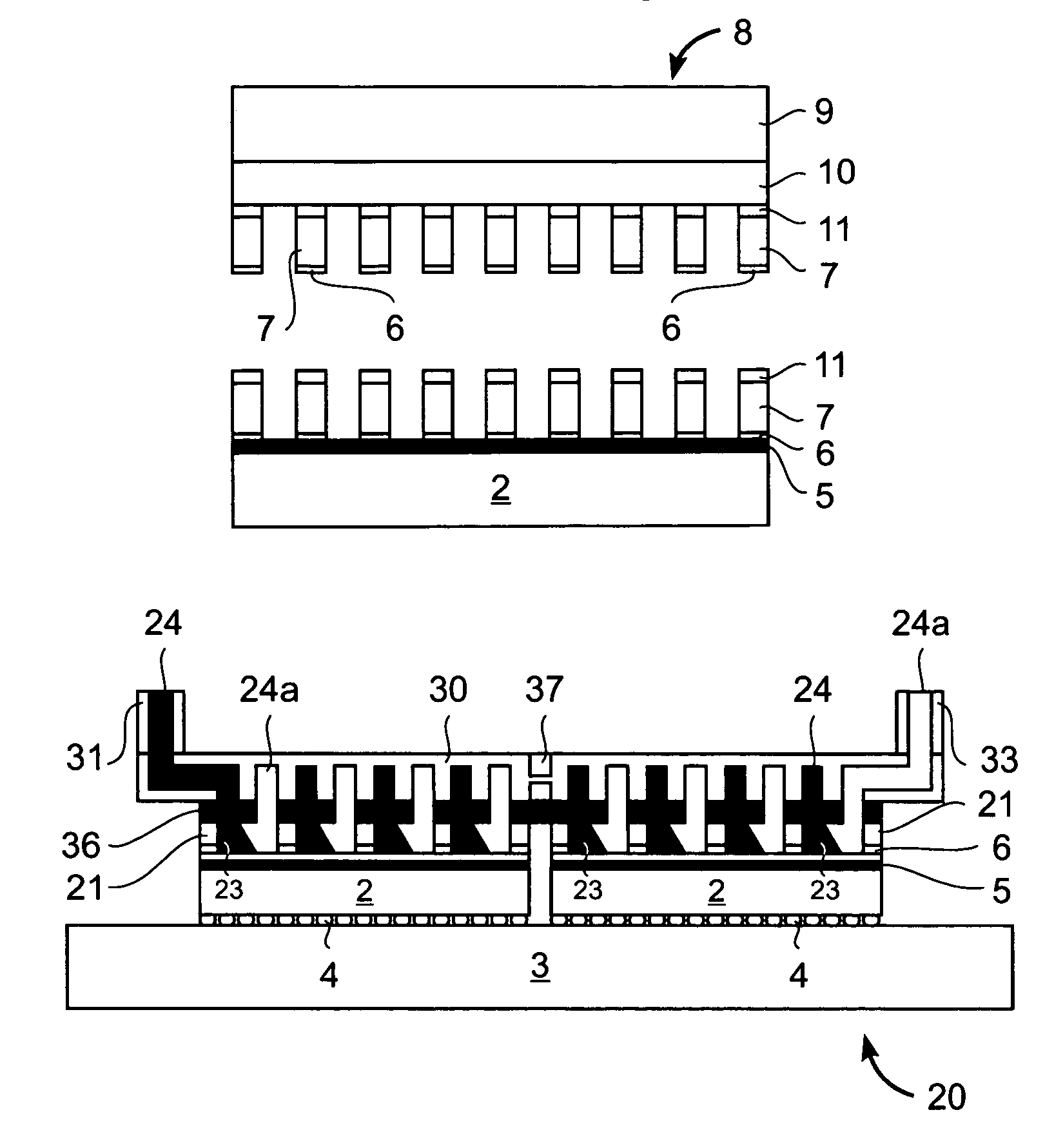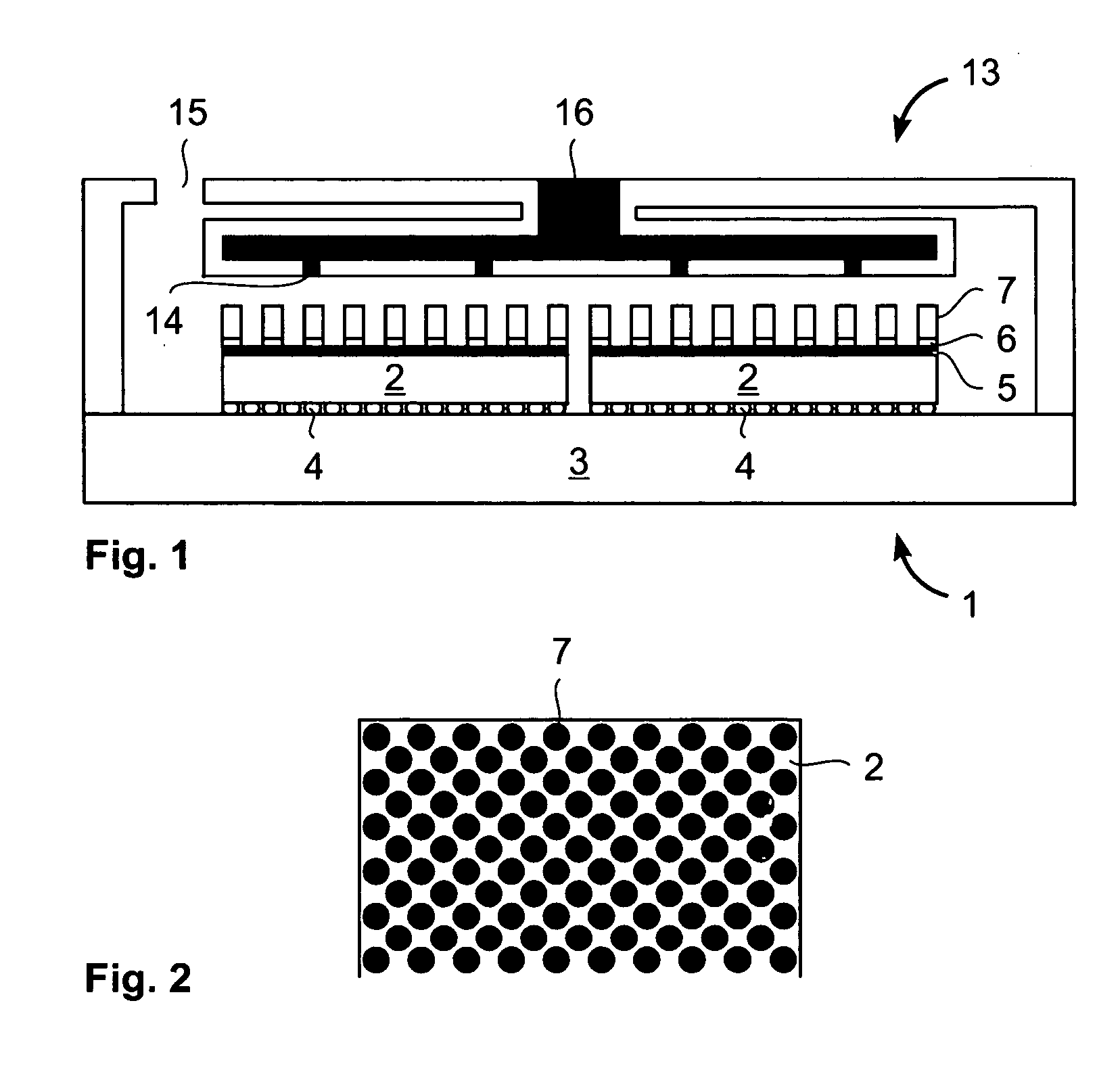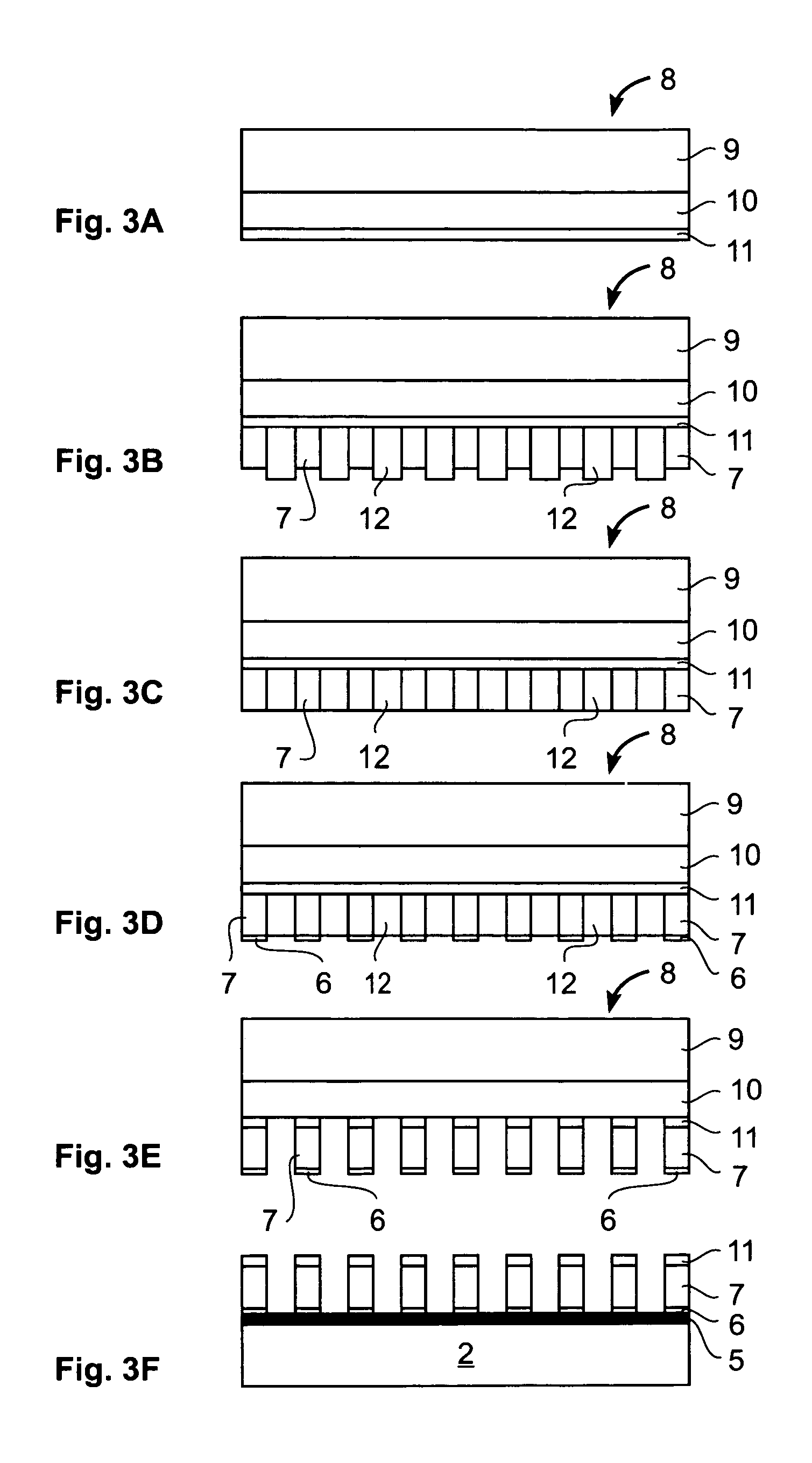Semiconductor device with a high thermal dissipation efficiency
a technology of semiconductor devices, which is applied in the direction of semiconductor devices, semiconductor/solid-state device details, electrical apparatus, etc., can solve the problems of reduced heat dissipation efficiency, increased heat dissipation, and restricted reworkability in the case of defects or insufficient thermal connections, etc., to achieve good mechanical stability and high thermal dissipation efficiency
- Summary
- Abstract
- Description
- Claims
- Application Information
AI Technical Summary
Benefits of technology
Problems solved by technology
Method used
Image
Examples
first embodiment
[0047]FIG. 1 shows a multi-chip module 1, according to the present invention in a cross-sectional view, which is integrated into a device for jet impingement cooling 13. The multi-chip module 1 comprises a common substrate 3 carrying a multilayer interconnection structure thereon and two semiconductor chips 2 attached to the surface of the substrate 3 in a face-down state via solder balls 4. The semiconductor chips 2 are mounted onto the surface of the substrate 3 by a flip chip process such as the common C4 technology process.
[0048]Each of the semiconductor chips 2 comprises an adhesion layer 5 coating the backsides of the semiconductor chips 2. The adhesion layers 5 consist for example of nickel and gold.
[0049]The multi-chip module 1 further comprises a thermally conducting structure comprising an array of free-standing studs 7 attached to the adhesion layers 5 of the semiconductor chips 2 via solder bonds 6. The studs 7 are essentially formed of a thermally conducting material su...
second embodiment
[0062]Instead of integrating a multi-chip module 1 into a device for jet impingement cooling 13, the multi-chip module 1 and the semiconductor chips, respectively, can also be provided with micro channel or duct cooling. In this regard, FIG. 4 illustrates, in a cross-sectional view, a multi-chip module 20 according to the present invention. This multi-chip module 20 also comprises two semiconductor chips 2 attached to the upper surface of a common substrate 3 in the face-down state via solder balls 4. The backsides of the semiconductor chips 2 are again each covered with an adhesion layer 5.
[0063]Instead of free-standing studs, the multi-chip module 20 further comprises two grids 21 of connected fins attached to each of the backsides of the semiconductor chips 2 for surface enlargement. These grids 21, which comprise a thermally conducting material such as copper, are bonded to the adhesion layers 5 coating the backsides of the chips 2 via solder bonds 6.
[0064]For this, FIG. 5 depic...
third embodiment
[0073]In order to produce a multi-chip module with a manifold layer, such as the multi-chip module 20 depicted in FIG. 4, the fabrication process described above with reference to FIGS. 3A to 3F can be utilized. After the steps of removing the carrier and mounting the semiconductor chips 2 onto a common substrate 3, a manifold layer is attached to the thermally conducting structure, i.e. a grid of connected fins or an array of frames, studs or fins, which is attached to the backsides of the semiconductor chips 2. Instead of fabricating a multi-chip module by using a carrier comprising a transparent substrate and a polyimide layer, as illustrated in FIGS. 3A to 3F, a manifold layer can be used as carrier, as well. For this, FIGS. 8A to 8H illustrate the fabrication process of a multi-chip module 40 according to the present invention.
[0074]In a first step, a manifold structure or manifold layer 41 having an electroconductive seed layer 11 is provided, as shown in FIG. 8A. Afterwards, ...
PUM
 Login to View More
Login to View More Abstract
Description
Claims
Application Information
 Login to View More
Login to View More - R&D
- Intellectual Property
- Life Sciences
- Materials
- Tech Scout
- Unparalleled Data Quality
- Higher Quality Content
- 60% Fewer Hallucinations
Browse by: Latest US Patents, China's latest patents, Technical Efficacy Thesaurus, Application Domain, Technology Topic, Popular Technical Reports.
© 2025 PatSnap. All rights reserved.Legal|Privacy policy|Modern Slavery Act Transparency Statement|Sitemap|About US| Contact US: help@patsnap.com



